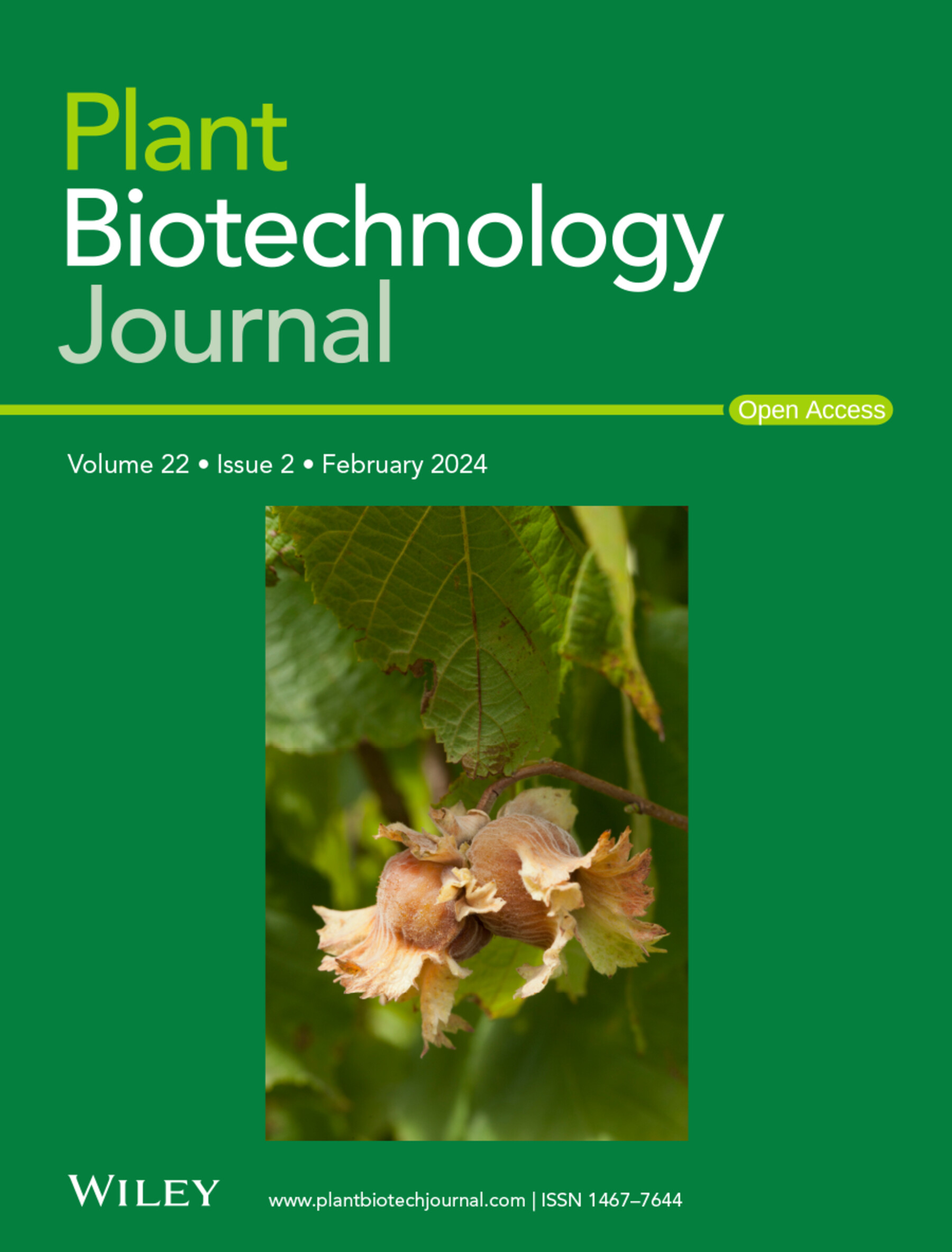口腔癌患者莴苣叶绿体甘露聚糖酶和葡聚糖酶的表达及鸡尾酒酶对白色念珠菌的功能评价
IF 10.1
1区 生物学
Q1 BIOTECHNOLOGY & APPLIED MICROBIOLOGY
引用次数: 0
摘要
白色念珠菌是一种导致多种疾病的人类病原体。白色念珠菌细胞壁含有几丁质、葡聚糖和甘露聚糖。因此,本研究评估了含有生菜表达的几丁质酶、葡聚糖酶和甘露聚糖酶的鸡尾酒酶对细胞培养或癌症患者样本中的白色念珠菌的疗效。利用三组PCR引物证实了莴苣转质体中Man1、CelO、Cbh1、Cbh2表达带的位点特异性整合和可选择标记基因的去除。在Southern blots中,由于没有未转化的基因组,证实了转质体系的同源性。与烟草不同,生菜转质体系没有花叶表型,生物量高于未转质体系。当幼苗在选择培养基中萌发时,缺乏分离证实了转基因的母系遗传。莴苣叶绿体中表达的甘露聚糖酶具有耐热性,在70℃时活性最高;生长70天后表达增加,并在广泛的pH范围内活跃(5-8)。莴苣叶绿体中表达的内切葡聚糖酶和外切葡聚糖酶在30 ~ 75°C和pH 4 ~ 8范围内具有广泛的活性。根据观察到的生物量和甘露聚糖酶表达水平,每英亩/年可收获多达8.64亿个酶单位。鸡尾酒酶能有效降解真菌细胞壁,显著降低白色念珠菌在培养物中的生存能力,并在口腔癌患者样本中完全抑制。除了抗真菌药物的生物医学应用之外,植物细胞酶市场预计将在2028年从520亿美元翻倍至1000亿美元。可食用叶酶生产为各种生物技术应用提供了一个不同于基于种子的现有技术的新平台。本文章由计算机程序翻译,如有差异,请以英文原文为准。

Expression of mannanase and glucanases in lettuce chloroplasts and functional evaluation of enzyme cocktail against Candida albicans in oral cancer patient samples
Candida albicans is a human pathogen responsible for several diseases. C. albicans cell wall contains chitin, glucan and mannan. Therefore, this study evaluated efficacy of enzyme cocktail containing lettuce-expressed chitinases, glucanases and mannanase against C. albicans in cell culture or cancer patient samples. Site-specific integration of the Man1, CelO, Cbh1, Cbh2 expression cassettes and removal of the selectable marker gene from lettuce transplastome was confirmed using three sets of PCR primers. Homoplasmy in transplastomic lines was confirmed in Southern blots by the absence of untransformed genomes. Unlike tobacco, lettuce transplastomic lines had no mosaic phenotype and yielded more biomass than untransformed plants. Maternal inheritance of transgenes was confirmed by lack of segregation when seedlings were germinated in the selection medium. Mannanase expressed in lettuce chloroplasts is thermostable, exhibiting the highest activity at 70 °C; expression increased up to 70 days of growth and is active in a broad range of pH (5–8). Endoglucanases and exoglucanases expressed in lettuce chloroplasts have a broad range of activities between 30 and 75 °C and pH 4–8. Based on observed biomass and mannanase expression level, up to 8640 million enzyme units could be harvested per acre/year. The enzyme cocktail effectively degraded the fungal cell wall, significantly reducing C. albicans viability in cultures and complete inhibition in oral cancer patient samples. Beyond biomedical applications of antifungal drugs, plant cell-based enzyme market is anticipated to double from $52 to >$100 billion in 2028. Edible leaf-based enzyme production offers a new platform that is different from seed-based current technologies for various biotechnology applications.
求助全文
通过发布文献求助,成功后即可免费获取论文全文。
去求助
来源期刊

Plant Biotechnology Journal
生物-生物工程与应用微生物
CiteScore
20.50
自引率
2.90%
发文量
201
审稿时长
1 months
期刊介绍:
Plant Biotechnology Journal aspires to publish original research and insightful reviews of high impact, authored by prominent researchers in applied plant science. The journal places a special emphasis on molecular plant sciences and their practical applications through plant biotechnology. Our goal is to establish a platform for showcasing significant advances in the field, encompassing curiosity-driven studies with potential applications, strategic research in plant biotechnology, scientific analysis of crucial issues for the beneficial utilization of plant sciences, and assessments of the performance of plant biotechnology products in practical applications.
 求助内容:
求助内容: 应助结果提醒方式:
应助结果提醒方式:


